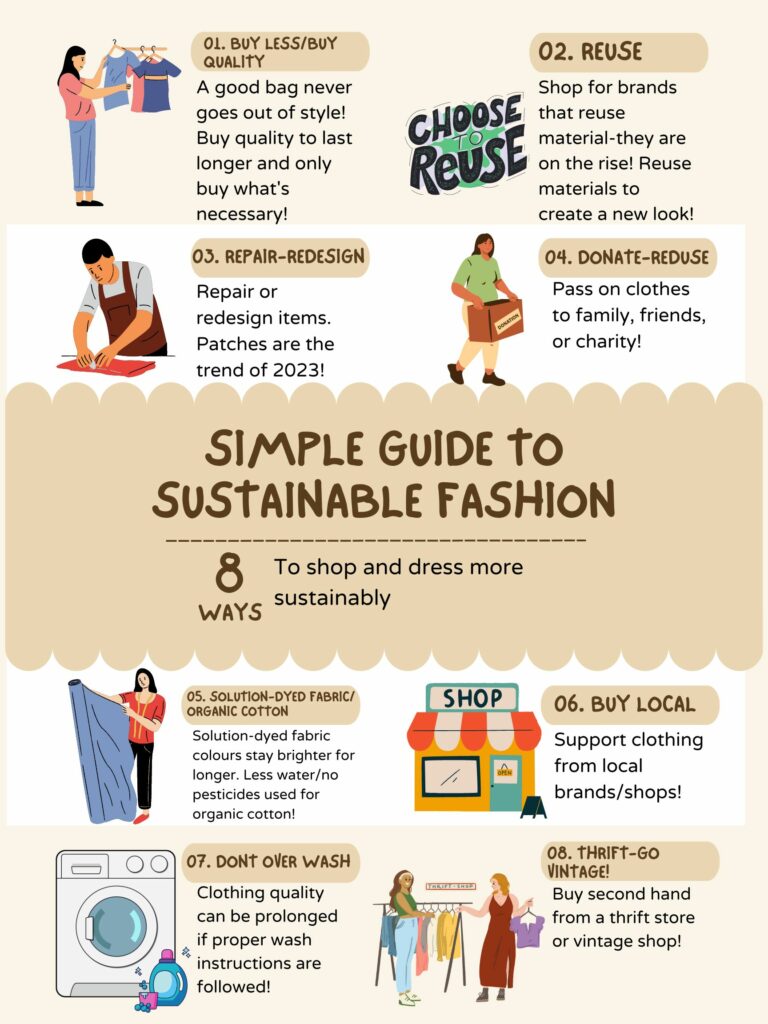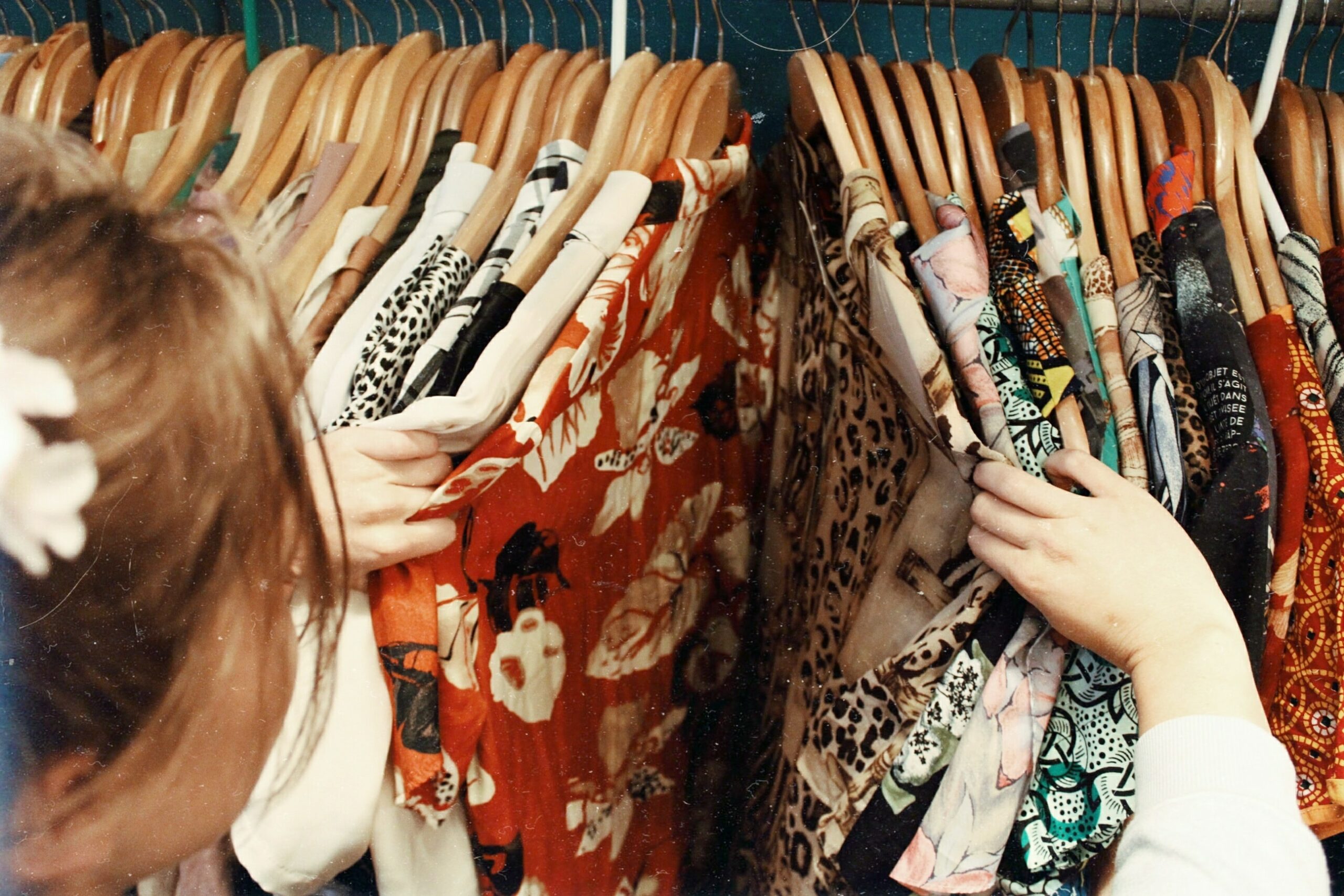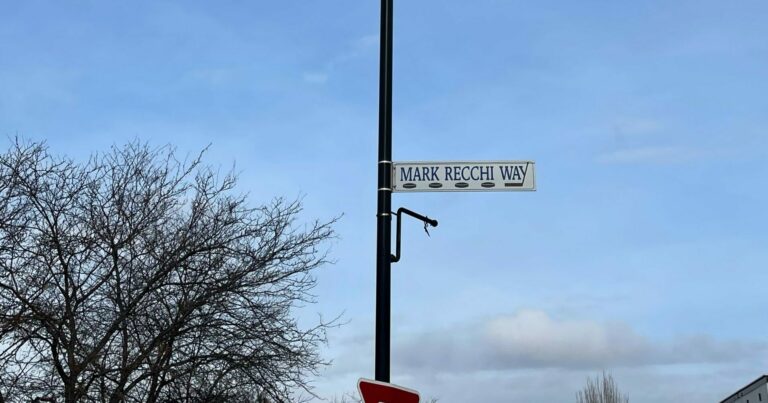Reduce, Reuse, Recycle, REDESIGN
Written by the Nada to Prada Group
Sustainability has never looked more fashionable!
Most of us are familiar with the 3 Rs of sustainability; reduce, reuse, and recycle. Why not add another R tailored to the fashion industry? REDESIGN. This leads to the question of why should we consider dressing ourselves more sustainably?
The fashion industry is worth about $3 trillion and accounting for 2% of the world’s per capita gross domestic product. Over the past 20 years, the emergence of different styles and falling clothing prices have led people to own five times more clothes than their grandparents! This cheap “fast fashion” in turn has an extremely negative impact on human health, living environment and the working environment of garment practitioners. Not only that, the disposal of discarded clothing is also a serious problem. Globally, only a portion of waste clothing finds its way into donation and recycling channels, but a large proportion still ends up in landfills or incineration. At present, emissions of carbon dioxide, methane and other greenhouse gases from the textile industry have exceeded the total emissions of all international flights and shipping combined, accounting for 2-8% of global greenhouse gas emissions. Moreover, the textile industry consumes about 215 trillion liters of water every year, making it the world’s second largest water consumer, accounting for about 20% of the world’s annual wastewater discharge. If the fashion industry’s production processes and consumption patterns continue as they are, it will cover 26% of the world’s carbon footprint by 2050! The fashion industry can promote sustainability in several ways, including promoting green design of products, choosing eco-friendly materials, using clean energy, recycling waste, promoting circular design systems, and sharing economy models. Sustainable fashion is about reducing the consumption of energy, reducing waste, reusing, and recycling. This is how sustainable fashion can be achieved.

Why and how can we implement sustainability into our wardrobe?
Save money! Retail therapy might help you cheer up occasionally, but it can turn into an addiction without your knowledge. Keeping track on how much you spend on clothes can help you save money. Necessities are an exception in this case.
Boycott! Many high-fashioned brands have set up their production units in Bangladesh where workers are employed at a monthly wage of $95 to produce clothes for the global market. Exploiting these workers can be stopped if we, as a community, boycott these big brands until they start paying these workers a fair wage and stop mistreating them.
Donate! Clean out your closet. Instead of throwing away clothes that do not fit you anymore, we can drop them off at a donation centre in your city. A piece of clothing that seems useless to you may help someone else and protect themselves from harsh weather conditions.
Sharing is caring! Who does not love hand-me-downs? Having a sibling of about your age can be a blessing in disguise. Raiding each other’s closet (with consent, of course) can also save you a lot of money. Going shopping together and buying clothes that you can share will save a lot of space in your closet.
Buy local! Instead of giving your hard-earned money to well-established brands and making them even richer, why not support local brands? Support local designers whose creations appeal to you. Their creations are usually way more affordable and buying from local designers also encourages them to create more and take their clothes to new heights.
Go vintage! Our mothers and fathers have been our first stylists. So why not raid our mom’s and dad’s closet? Take inspiration from their old photographs and fusion them with something funky to create something that appeals to you, and you feel confident in.
Quality over price! Buying quality clothes helps you save yourself from buying the same thing all over again. Quality products last long. Paying a few extra bucks will not hurt as long as you get the whole benefit from it. Always look for quality while you are buying clothes. A higher brand does not guarantee higher quality.
References:
2022.12.05what is solution dyed fabric? Better for Environment & User. Honmyue: Outdoor Textile & Fabric Manufacturer. (n.d.). Retrieved February 12, 2023, from https://fabric.textile-hy.com.tw/blog/post/what-is-solution-dyed.html
Adams, A. (2023, January 18). Miss Universe R’Bonney Gabriel is unbothered by haters and focused on a passion for sustainable style. Peoplemag. Retrieved February 12, 2023, from https://people.com/human-interest/miss-universe-rbonney-gabriel-unbothered-haters-passion-sustainable-style/
Assoune, A. (2022, March 29). Sustainable fashion coverage in Vogue Magazine. Panaprium. Retrieved February 12, 2023, from https://www.panaprium.com/blogs/i/vogue-sustainable-fashion
Chan, E., & {{{Author}}}. (n.d.). Vogue’s Ultimate Guide to Sustainable Fashion. Vogue India. Retrieved February 12, 2023, from https://www.vogue.in/fashion/content/vogues-ultimate-guide-to-sustainable-fashion/amp
Environmental sustainability in the fashion industry. Geneva Environment Network. (n.d.). Retrieved February 12, 2023, from https://www.genevaenvironmentnetwork.org/resources/updates/sustainable-fashion/
Frayer, L. (2020, June 5). For Bangladesh’s struggling garment workers, hunger is a bigger worry than pandemic. NPR. Retrieved February 12, 2023, from https://www.npr.org/2020/06/05/869486297/for-bangladeshs-struggling-garment-workers-hunger-is-a-bigger-worry-than-pandemi
Home. The UN Alliance for Sustainable Fashion. (2022, April 4). Retrieved February 12, 2023, from https://unfashionalliance.org/
Home. The UN Alliance for Sustainable Fashion. (2022, April 4). Retrieved February 12, 2023, from https://unfashionalliance.org/
McHaffie, B. (2018, March 2). Photo by Becca McHaffie on unsplash. Beautiful Free Images & Pictures. Retrieved February 12, 2023, from https://unsplash.com/photos/Fzde_6ITjkw
Nishat, & here, P. enter your name. (2020, July 8). The cost of fashion: 4.1 Million Bangladeshi garment workers. Open Access Government. Retrieved February 12, 2023, from https://www.openaccessgovernment.org/bangladeshi-garment-workers/89939/
Sadowski, M., Perkins, L., & McGarvey, E. (2021, May 11). Roadmap to net zero: Delivering science-based targets in the apparel sector. World Resources Institute. Retrieved February 12, 2023, from https://www.wri.org/research/roadmap-net-zero-delivering-science-based-targets-apparel-sector
Upcycling textiles. Alamanda Textiles. (n.d.). Retrieved February 12, 2023, from http://alamandatextiles.weebly.com/upcycling-textiles.html
Infographic created by: Maryclaire Snowball




